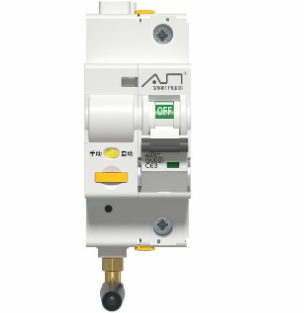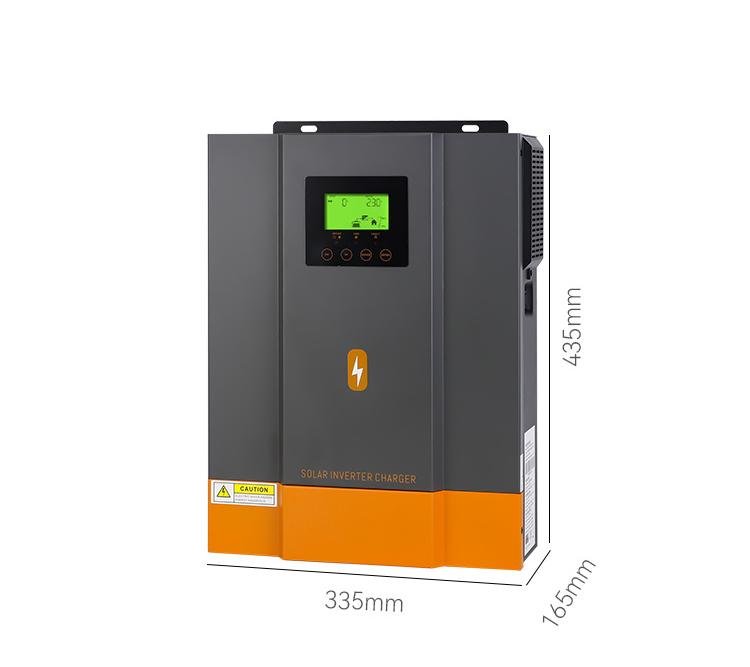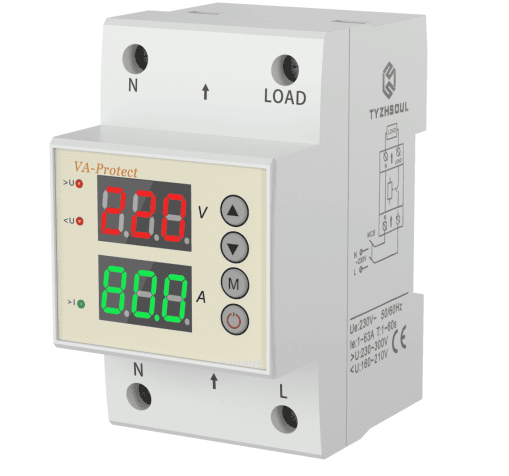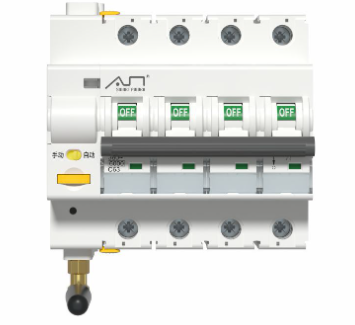Product
Product Categories
The function of the USD63.84 ZS8-3VA adjustable voltage and current Magnetic holding relay Overvoltage and undervoltage protector is as follows:Overvoltage protection, undervoltage protection, automatic reset, equipment maintenance, safety indication, easy installation, strong adaptability.Scientific design avoids crowded wiring productionspace.The inlet port is consistent with the outletport of the leakage protector, facilitating wiringand ensuring flexibility.
I. Function It is primarily designed to protect electric motors from various electrical faults. For example, in case of an overload, which means that the motor is drawing more current than it is rated for over a period of time. The motor circuit breaker can detect this excessive current and cut off the power supply to the motor, preventing the motor from overheating and getting damaged.It also protects against short circuits. When a short circuit occurs, there is a sudden and very high flow of current. The motor circuit breaker can quickly interrupt this abnormal current flow, safeguarding the motor and other components in the circuit.II. Design and Construction It typically consists of a set of contacts. These contacts are usually made of conductive materials like copper or silver alloy. When the breaker is in the "on" position, these contacts are closed, allowing the current to flow through the circuit to the motor. When a fault is detected, the contacts are opened to break the circuit.There is also a mechanism for detecting overcurrents. This can be a thermal magnetic device. The thermal part responds to the heat generated by the overcurrent (as the current is related to the heat produced according to Joule's law, Q = I^{2}RtQ=I 2 Rt, where QQ is the heat, II is the current, RR is the resistance and tt is the time). The magnetic part responds to the high magnitude magnetic field created by a large, sudden current, such as in a short circuit situation. III. Application Areas In industrial settings, motor circuit breakers are widely used in factories. For instance, in a manufacturing plant with numerous electric motors driving conveyor belts, pumps, and other machinery.They are also used in commercial buildings. For example, in elevators where electric motors are used for lifting and lowering the elevator car. In air conditioning systems, the motors that drive the compressors and fans are also protected by motor circuit breakers.
I. Function It is primarily designed to protect electric motors from various electrical faults. For example, in case of an overload, which means that the motor is drawing more current than it is rated for over a period of time. The motor circuit breaker can detect this excessive current and cut off the power supply to the motor, preventing the motor from overheating and getting damaged.It also protects against short circuits. When a short circuit occurs, there is a sudden and very high flow of current. The motor circuit breaker can quickly interrupt this abnormal current flow, safeguarding the motor and other components in the circuit.II. Design and Construction It typically consists of a set of contacts. These contacts are usually made of conductive materials like copper or silver alloy. When the breaker is in the "on" position, these contacts are closed, allowing the current to flow through the circuit to the motor. When a fault is detected, the contacts are opened to break the circuit.There is also a mechanism for detecting overcurrents. This can be a thermal magnetic device. The thermal part responds to the heat generated by the overcurrent (as the current is related to the heat produced according to Joule's law, Q = I^{2}RtQ=I 2 Rt, where QQ is the heat, II is the current, RR is the resistance and tt is the time). The magnetic part responds to the high magnitude magnetic field created by a large, sudden current, such as in a short circuit situation. III. Application Areas In industrial settings, motor circuit breakers are widely used in factories. For instance, in a manufacturing plant with numerous electric motors driving conveyor belts, pumps, and other machinery.They are also used in commercial buildings. For example, in elevators where electric motors are used for lifting and lowering the elevator car. In air conditioning systems, the motors that drive the compressors and fans are also protected by motor circuit breakers.
This high performance photovoltaic inverter, with its excellent output capacity and wide applicability, is the preferred power solution in many fields.
- Strong output power
- Wide range of photovoltaic input voltage
- Compatible with a variety of batteries
- Efficient charging capability
- Remote monitoring function
- Durable surface treatment
- Efficient heat dissipation design
The function of the USD30.24 ZS7-VA adjustable voltage and current Magnetic holding relay Overvoltage and undervoltage protector is as follows:Overvoltage protection, undervoltage protection, automatic reset, equipment maintenance, safety indication, easy installation, strong adaptability.Scientific design avoids crowded wiring productionspace.The inlet port is consistent with the outletport of the leakage protector, facilitating wiringand ensuring flexibility.
I. Function It is primarily designed to protect electric motors from various electrical faults. For example, in case of an overload, which means that the motor is drawing more current than it is rated for over a period of time. The motor circuit breaker can detect this excessive current and cut off the power supply to the motor, preventing the motor from overheating and getting damaged.It also protects against short circuits. When a short circuit occurs, there is a sudden and very high flow of current. The motor circuit breaker can quickly interrupt this abnormal current flow, safeguarding the motor and other components in the circuit.II. Design and Construction It typically consists of a set of contacts. These contacts are usually made of conductive materials like copper or silver alloy. When the breaker is in the "on" position, these contacts are closed, allowing the current to flow through the circuit to the motor. When a fault is detected, the contacts are opened to break the circuit.There is also a mechanism for detecting overcurrents. This can be a thermal magnetic device. The thermal part responds to the heat generated by the overcurrent (as the current is related to the heat produced according to Joule's law, Q = I^{2}RtQ=I 2 Rt, where QQ is the heat, II is the current, RR is the resistance and tt is the time). The magnetic part responds to the high magnitude magnetic field created by a large, sudden current, such as in a short circuit situation. III. Application Areas In industrial settings, motor circuit breakers are widely used in factories. For instance, in a manufacturing plant with numerous electric motors driving conveyor belts, pumps, and other machinery.They are also used in commercial buildings. For example, in elevators where electric motors are used for lifting and lowering the elevator car. In air conditioning systems, the motors that drive the compressors and fans are also protected by motor circuit breakers.
I. Function It is primarily designed to protect electric motors from various electrical faults. For example, in case of an overload, which means that the motor is drawing more current than it is rated for over a period of time. The motor circuit breaker can detect this excessive current and cut off the power supply to the motor, preventing the motor from overheating and getting damaged.It also protects against short circuits. When a short circuit occurs, there is a sudden and very high flow of current. The motor circuit breaker can quickly interrupt this abnormal current flow, safeguarding the motor and other components in the circuit.II. Design and Construction It typically consists of a set of contacts. These contacts are usually made of conductive materials like copper or silver alloy. When the breaker is in the "on" position, these contacts are closed, allowing the current to flow through the circuit to the motor. When a fault is detected, the contacts are opened to break the circuit.There is also a mechanism for detecting overcurrents. This can be a thermal magnetic device. The thermal part responds to the heat generated by the overcurrent (as the current is related to the heat produced according to Joule's law, Q = I^{2}RtQ=I 2 Rt, where QQ is the heat, II is the current, RR is the resistance and tt is the time). The magnetic part responds to the high magnitude magnetic field created by a large, sudden current, such as in a short circuit situation. III. Application Areas In industrial settings, motor circuit breakers are widely used in factories. For instance, in a manufacturing plant with numerous electric motors driving conveyor belts, pumps, and other machinery.They are also used in commercial buildings. For example, in elevators where electric motors are used for lifting and lowering the elevator car. In air conditioning systems, the motors that drive the compressors and fans are also protected by motor circuit breakers.
Contact voltage regulators have non-lack fidelity in waves,portable size,light weight, high efficiency, convenience to use,reliability and durability in movement. It can be widely used in the industries (such as chemical industry machine, metallurgy instrument & appearance,machine manufacture, light-industrial), scientific experiments, public facilities and household appliances to realize the aims of voltage regulation,temperature control, light regulation and power control etc.
I. Function It is primarily designed to protect electric motors from various electrical faults. For example, in case of an overload, which means that the motor is drawing more current than it is rated for over a period of time. The motor circuit breaker can detect this excessive current and cut off the power supply to the motor, preventing the motor from overheating and getting damaged.It also protects against short circuits. When a short circuit occurs, there is a sudden and very high flow of current. The motor circuit breaker can quickly interrupt this abnormal current flow, safeguarding the motor and other components in the circuit.II. Design and Construction It typically consists of a set of contacts. These contacts are usually made of conductive materials like copper or silver alloy. When the breaker is in the "on" position, these contacts are closed, allowing the current to flow through the circuit to the motor. When a fault is detected, the contacts are opened to break the circuit.There is also a mechanism for detecting overcurrents. This can be a thermal magnetic device. The thermal part responds to the heat generated by the overcurrent (as the current is related to the heat produced according to Joule's law, Q = I^{2}RtQ=I 2 Rt, where QQ is the heat, II is the current, RR is the resistance and tt is the time). The magnetic part responds to the high magnitude magnetic field created by a large, sudden current, such as in a short circuit situation. III. Application Areas In industrial settings, motor circuit breakers are widely used in factories. For instance, in a manufacturing plant with numerous electric motors driving conveyor belts, pumps, and other machinery.They are also used in commercial buildings. For example, in elevators where electric motors are used for lifting and lowering the elevator car. In air conditioning systems, the motors that drive the compressors and fans are also protected by motor circuit breakers.









